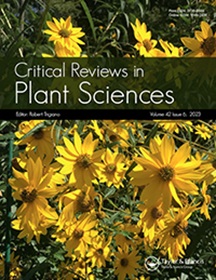Defining Cyanobacterial Species: Diversity and Description Through Genomics
IF 6
2区 生物学
Q1 PLANT SCIENCES
引用次数: 32
Abstract
Abstract Cyanobacteria were the first oxygenic photosynthersizers, evolving ∼3.5 bya, they have since radiated into one of the most diverse and widely distributed phyla of bacteria. Cyanobacterial diversification occurs through ecological adaptation, facilitated by asexual reproduction, homologous recombination and horizontal gene transfer, and selection pressures on ecotypes leading to speciation. Delimiting cyanobacterial species is, thus, fraught with difficulties and a clear taxonomy has not yet been universally accepted. This review discusses diversity and description of cyanobacteria: covering traditional and new methods to define species boundaries and concluding with a focus on the advances made through genomics. Examples from the genera Raphidiopsis, Microcystis, and Prochlorococcus are used throughout. Genome plasticity allows cyanobacteria to rapidly adapt and be resilient to environmental changes, illustrating the means of their persistence, and is an important aspect of their biology. Genomics has revealed generalist and specialist genome strategies, intraspecific diversity, and genome evolution in response to environmental stimuli. New taxonomic definitions will need to account for intraspecific genetic variation, with a species classification that is relevant to a species concept and scientific endeavors. Capturing intraspecific diversity with comparative genomics may provide a new path to species classification. This is demonstrated with two case studies; comparison of available genomes shows differing species delineation of Raphidiopsis and Microcystis. In both genera, species boundaries occur at ∼96% average nucleotide identity (ANI), where homologous recombination is constrained, but speciation of Raphidiopsis raciborskii, R. brookii, and R. curvata has occurred through geographic isolation, whereas available data on Microcystis contain at least 15 species, reflecting, to differing extents, different ecotypes, which may co-exist. Both case studies question the relative importance of species-specific versus habitat specific gene pools as drivers of inter- and intraspecific diversity.定义蓝藻物种:多样性和基因组学描述
蓝藻是最早的含氧光合作用菌,进化约3.5年,它们已经辐射到最多样化和广泛分布的细菌门之一。蓝藻的多样化是通过生态适应发生的,通过无性繁殖、同源重组和水平基因转移以及生态型的选择压力导致物种形成。划定蓝藻物种,因此,充满了困难和一个明确的分类尚未被普遍接受。这篇综述讨论了蓝藻的多样性和描述:涵盖了传统和新的方法来定义物种边界,并重点讨论了通过基因组学取得的进展。从Raphidiopsis属、微囊藻属和原绿球藻属的例子贯穿始终。基因组可塑性使蓝藻能够迅速适应和适应环境变化,这说明了它们的持久性,是它们生物学的一个重要方面。基因组学揭示了通才和专才基因组策略、种内多样性和基因组进化对环境刺激的响应。新的分类学定义将需要考虑种内遗传变异,与物种概念和科学努力相关的物种分类。利用比较基因组学捕获种内多样性可能为物种分类提供一条新的途径。通过两个案例研究证明了这一点;现有基因组的比较显示了Raphidiopsis和Microcystis的不同物种描述。在这两个属中,物种边界发生在约96%的平均核苷酸同源性(ANI),同源重组受到限制,但Raphidiopsis raciborskii, R. brookii和R. curvata的物种形成是通过地理隔离发生的,而Microcystis的现有数据包含至少15种,在不同程度上反映了不同的生态型,这些生态型可能共存。这两个案例研究都质疑物种特异性与栖息地特异性基因库作为种间和种内多样性驱动因素的相对重要性。
本文章由计算机程序翻译,如有差异,请以英文原文为准。
求助全文
约1分钟内获得全文
求助全文
来源期刊
CiteScore
12.90
自引率
1.40%
发文量
15
审稿时长
>12 weeks
期刊介绍:
Critical Reviews in Plant Sciences focuses on presenting in-depth and up-to-date reviews of timely and/or cutting-edge subjects in the broad discipline of plant science, ranging from molecular biology/biochemistry through the areas of cell biology, plant pathology and physiology, genetics, classical botany, and ecology, to practical agricultural applications. Articles in the journal provide an up-to-date literature base for researchers and students, pointing the way towards future research needs. The journal is also a significant source of credible, objective information to aid decision makers at all levels.

 求助内容:
求助内容: 应助结果提醒方式:
应助结果提醒方式:


